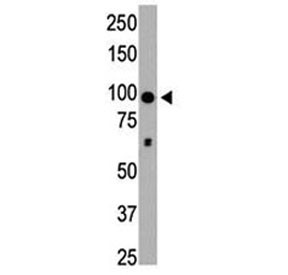Cookie preferences
This website uses cookies, which are necessary for the technical operation of the website and are always set. Other cookies, which increase the comfort when using this website, are used for direct advertising or to facilitate interaction with other websites and social networks, are only set with your consent.
Configuration
Technically required
These cookies are necessary for the basic functions of the shop.
"Allow all cookies" cookie
"Decline all cookies" cookie
CSRF token
Cookie preferences
Currency change
Customer-specific caching
FACT-Finder tracking
Individual prices
Selected shop
Session
Comfort functions
These cookies are used to make the shopping experience even more appealing, for example for the recognition of the visitor.
Note
Show the facebook fanpage in the right blod sidebar
Statistics & Tracking
Affiliate program
Conversion and usertracking via Google Tag Manager
Track device being used

| Item number | Size | Datasheet | Manual | SDS | Delivery time | Quantity | Price |
|---|---|---|---|---|---|---|---|
| NSJ-F41149-0.08ML | 80 µl | - | - |
3 - 10 business days* |
326.00€
|
||
| NSJ-F41149-0.4ML | 400 µl | - | - |
3 - 10 business days* |
702.00€
|
If you have any questions, please use our Contact Form.
You can also order by e-mail: info@biomol.com
Larger quantity required? Request bulk
You can also order by e-mail: info@biomol.com
Larger quantity required? Request bulk
In 1X PBS, pH 7.4, with 0.09% sodium azide. DNA is wrapped around histone proteins to form... more
Product information "Anti-HDAC4"
In 1X PBS, pH 7.4, with 0.09% sodium azide. DNA is wrapped around histone proteins to form nucleosomes and chromatin fiber, a higher-order structure. Chromatin can become alternatively revealed to or concealed from transcription factors. Acetylation of lysine residues induces conformational changes in core histones by destabilizing nucleosomes and allowing transcription factors access to recognition elements in DNA. Deacetylation of histones by histone deacetylases (HDACs) reseals the chromosomal package, leading to a repression of transcription. HDAC4 does not bind DNA directly, but rather through MEF2C and MEF2D. Binding of the N terminus of HDAC4 to MEF2C represses MEF2C transcription activity. The catalytic domain of HDAC4 interacts with HDAC3 via the transcriptional corepressor NCOR2. Experimental conditions leading to the suppression of HDAC4 binding to NCOR2 and to HDAC3 result in loss of enzymatic activity associated with HDAC4, indicating regulation of transcription by bridging the enzymatically active NCOR2-HDAC3 complex and select transcription factors. HDAC4 and MITR contain calmodulin-binding domains that overlap with their MEF2 binding domains. Binding of calmodulin to HDAC4 leads to its dissociation from MEF2, relieving MEF2 from the transcriptional repression by HDAC4. Together, HDAC4, MITR, and CABIN1 constitute a family of calcium-sensitive transcriptional repressors of MEF2. In murine studies, HDAC4, which is expressed in prehypertrophic chondrocytes, interacts with and inhibits the activity of Runx2 in mice, a transcription factor necessary for chondrocyte hypertrophy, establishing HDAC4 as a central regulator of chondrocyte hypertrophy and skeletogenesis. Protein function: Responsible for the deacetylation of lysine residues on the N-terminal part of the core histones (H2A, H2B, H3 and H4). Histone deacetylation gives a tag for epigenetic repression and plays an important role in transcriptional regulation, cell cycle progression and developmental events. Histone deacetylases act via the formation of large multiprotein complexes. Involved in muscle maturation via its interaction with the myocyte enhancer factors such as MEF2A, MEF2C and MEF2D. Involved in the MTA1-mediated epigenetic regulation of ESR1 expression in breast cancer. [The UniProt Consortium]
| Keywords: | Anti-HD4, Anti-HDAC4, Anti-KIAA0288, EC=3.5.1.98, Anti-Histone deacetylase 4, HDAC4 Antibody |
| Supplier: | NSJ Bioreagents |
| Supplier-Nr: | F41149 |
Properties
| Application: | WB, ELISA |
| Antibody Type: | Polyclonal |
| Conjugate: | No |
| Host: | Rabbit |
| Species reactivity: | human, mouse |
| Immunogen: | A portion of amino acids 1052-1084 from the human protein was used as the immunogen for this HDAC4 antibody. |
| Format: | Purified |
Database Information
| KEGG ID : | K11406 | Matching products |
| UniProt ID : | P56524 | Matching products |
| Gene ID | GeneID 9759 | Matching products |
Handling & Safety
| Storage: | -20°C |
| Shipping: | +4°C (International: +4°C) |
Caution
Our products are for laboratory research use only: Not for administration to humans!
Our products are for laboratory research use only: Not for administration to humans!
Information about the product reference will follow.
more
You will get a certificate here
Viewed




